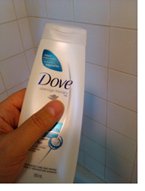Food safe plastics you can use in your kitchen, and elsewhere in the home.
Food-safe plastics? Perhaps it would be more accurate to call them safer plastics.
But given that our homes are literally filled with plastics, including many of the building materials in the building itself, it is reasonable to focus on getting rid of only those plastics which are known or suspected threats to our health.
These plastics are BPA-free, phthalates-free and PVC-free.

Safe Plastic # 1 – Polyethylene Terephthalate (PET or PETE)
This is the plastic typically used in most clear pop bottles and water bottles. As far as anyone knows, these are safe, and there is no migration of dangerous chemicals into your drinks.
That said, these bottles are designed one-time use only and should not be used over and over again, as there is a danger of bacterial build-up on the plastic.
Safe Plastic #2 – High Density Polyethyline (HDPE)

HDPE is used in a wide range of containers and bottles, including detergent bottles, shampoo bottles and milk bottles.
One of the features of HDPE, which you will recognize in plastic milk bottles, is that it is slightly cloudy and not totally transparent.
With regard to buying milk, it is probably a good idea to buy it in HDPE bottles or jugs. While the inside of cardboard milk cartons used to be lined with wax, these days they are coated with plastic.
And there is nothing on the carton that identifies the kind of plastic used.
Safe Plastic # 4 – Low density polyethylene (LDPE)
LDPE is used typically used in the manufacture of shopping bags, sandwich bags, some cling wrap, and the kind of plastic wrapping you get when you buy toiled paper and kitchen paper towels.
LDPE is believed to be safe, and is also used to make opaque baby bottles.
Safe Plastic #5 – Polypropylene.
This is a fairly rigid plastic and is typically used for yogurt cups, some baby bottles and some plastic cups and bowls. It is also used in disposable diapers.
There are no known dangers associated with polypropylene.
You might also be interested in...





